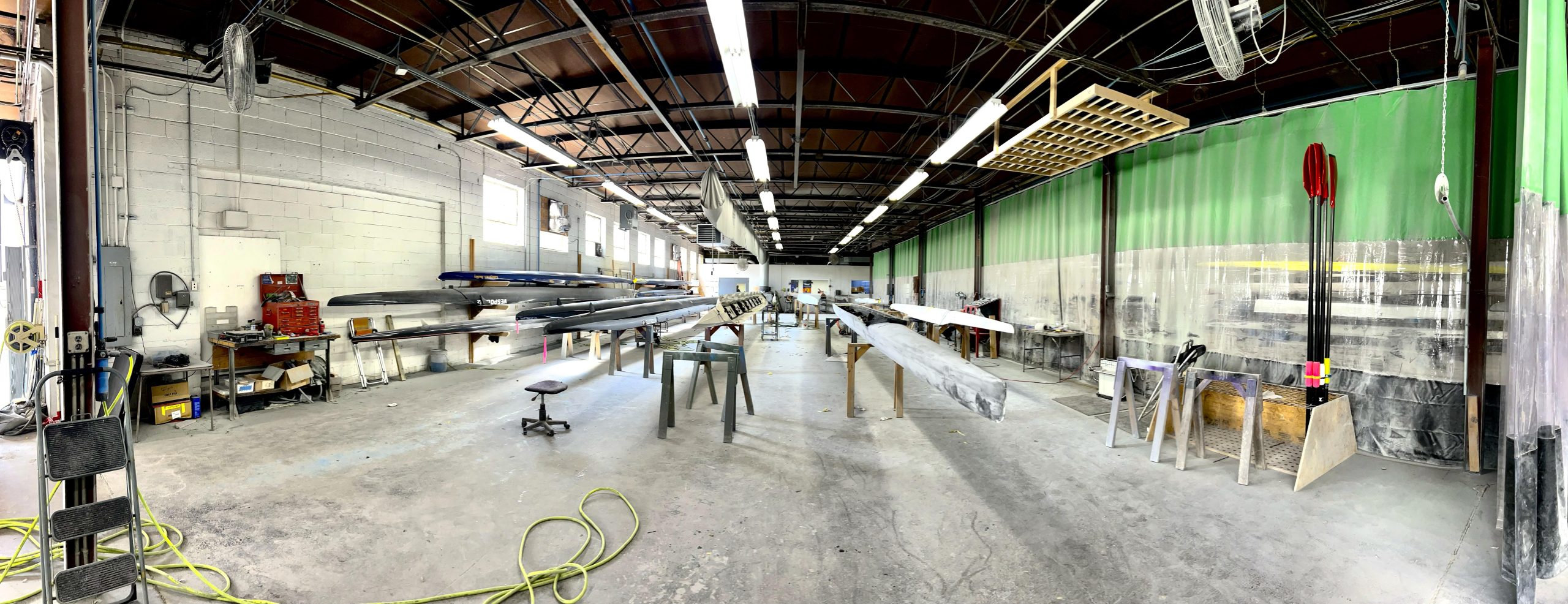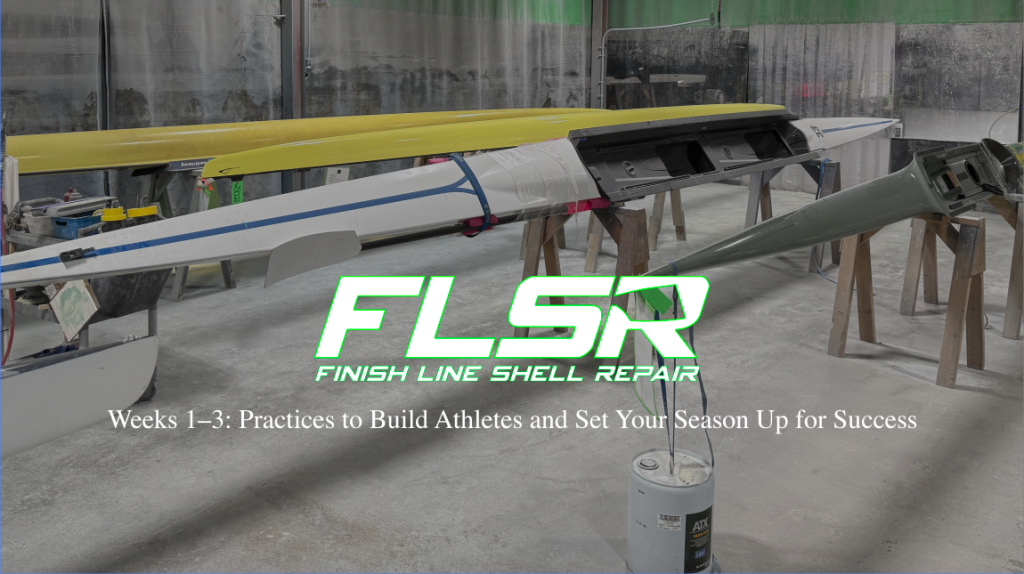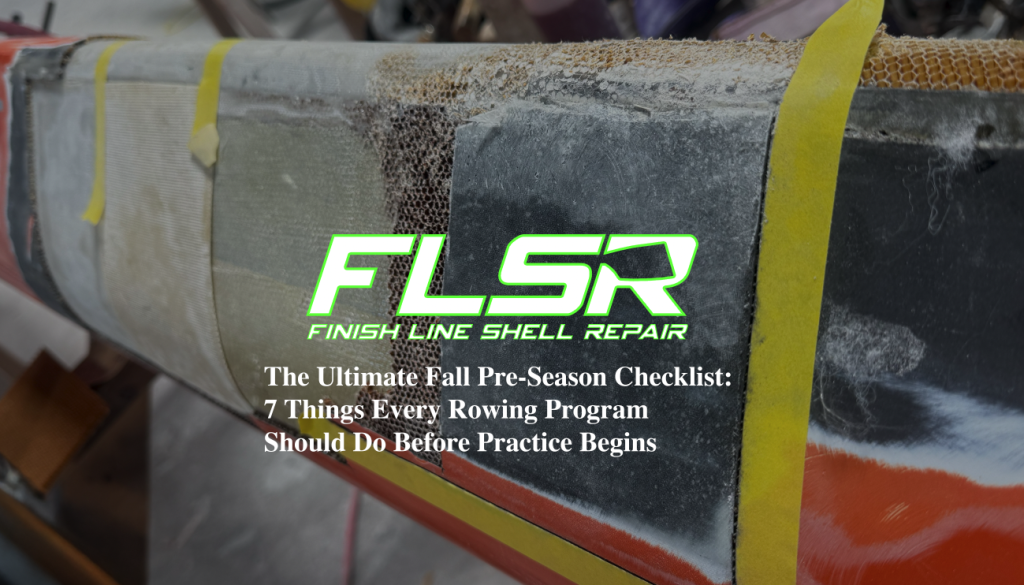Warning: This article contains high school algebra.
This is a 2025 update of one of the most shared articles we have ever written.
Have You Looked at Your Boat Straps Lately?

Check the shed at the boathouse. What do you see? Straps tossed in a bucket? Maybe a few rolled up? When was the last time your program threw them all out?
Yes, all of them. Every, single, one. Cut the buckles off, and put them in the trash.
Because here’s the reality: we strap down $30,000, $40,000, $50,000+ racing shells with the same sun-bleached nylon we bought ten plus years ago and then roll down the highway at 70 mph.
Usually, it’s just two or three 1″ straps, almost as old as your freshman coxswain, holding the future of your season.
Do you really trust that?
Let’s so some high school level math.
- New 8+: $45,000–$65,000 (average $55,000)
- New 1.5″ strap from Finish Line Shell Repair: $17
- Recommended count: 3 per 8+, 2 per 4+/2x/1x
Fully loaded 4-rack trailer (6 eights, 6 fours/doubles/singles):
- (3 × 6) + (2 × 6) = 30 straps
- 30 × $17 = $510
- That’s ~1% of a new 8+
Fully loaded 5-rack trailer (9 eights, 6 fours/doubles/singles):
- (3 × 9) + (2 × 6) = 39 straps
- 39 × $17 = $663
- That’s 1.2% of a new 8+
The Insurance You Can Hold in Your Hand
If you’re hauling 15 boats, your trailer is worth at least $250,000.
So ask yourself: would you risk a quarter-million-dollar investment to save $600?
I wouldn’t.
That’s why I tell every program the same thing:
- Replace every strap, every year.
- Buy 40 and keep a few extras.
- Cut the buckle off anything questionable so nobody ever uses it again.
Straps aren’t accessories. They’re insurance policies with buckles. And at $17 each, it’s the cheapest insurance you’ll ever buy.
The Bottom Line
Don’t gamble with your fleet. Replace them. Every. Single. Year.
Yes, this is a sales pitch, because I’d rather sell you straps than see your boats in our repair shop.
Tell me how many you need, and I’ll send them your way.
[email protected]








